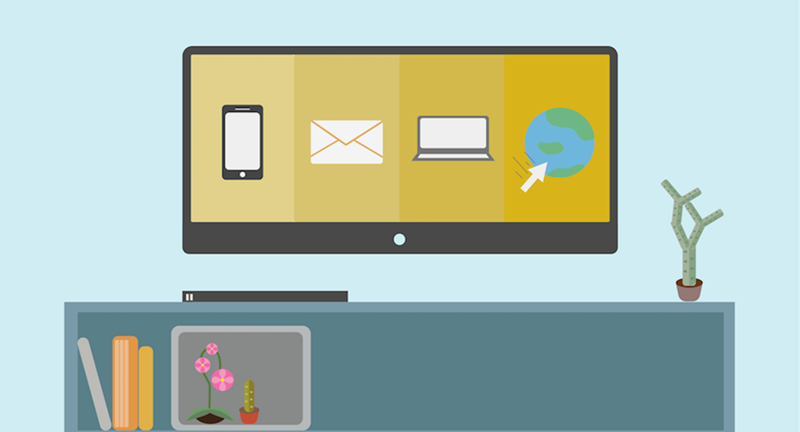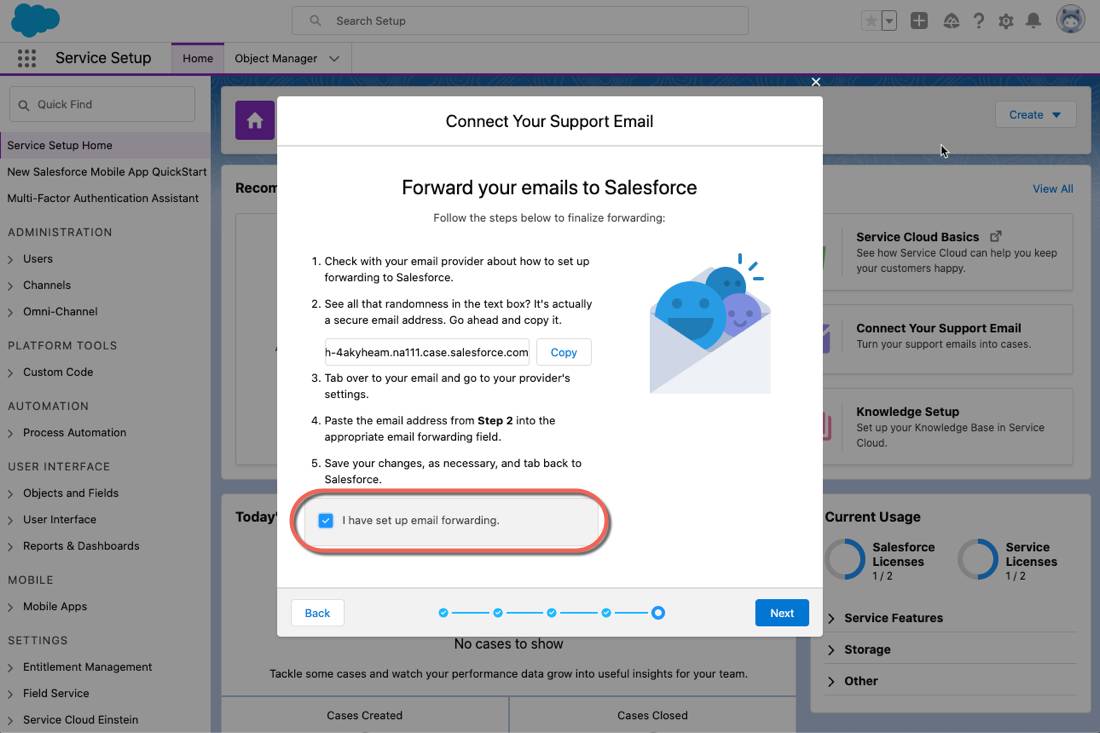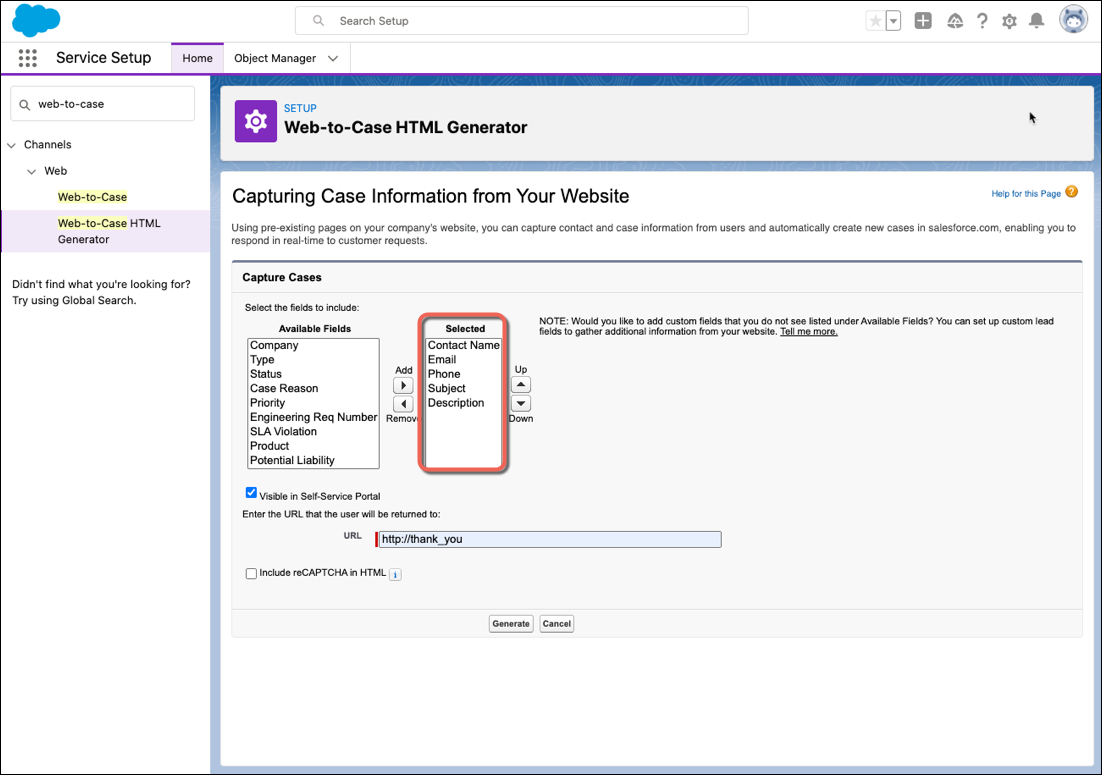Create Digital Engagement on Multiple Channels
Learning Objectives
After completing this unit, you’ll be able to:
- Describe channels for customer support.
- Turn questions from the web into cases.
- Add an email service channel with a setup flow.
- Learn about more digital engagement channels.
Digital Engagement Tools in Salesforce
With basic case management set up for Ursa Major Solar, Maria starts thinking about how to collect cases from customers. She’s not finished adding more of the case management tools she’s discovered to complete her org’s Service Cloud setup. Still, she’d like a peek at what’s ahead. After all, there’s nothing to track, route, escalate, or answer until customers’ cases find their way into Salesforce.
Maria temporarily steps back from case management to look at channels. She remembers that adding multiple channels—phone, email, text message, social media, and more—is the second stage of general setup process for Service Cloud. After a little web surfing, she learns that channels or digital engagement is a way of understanding service in our connected world.
Today’s customers live in an instant, mobile, web-driven world and expect one-to-one service on their channel of choice anywhere, every time. If they can’t reach you on their favorite channel, they might think less of your brand, think that you’re behind the times, or think that you’re putting them through a service circus.

To begin receiving cases to manage, Maria starts with two of the easiest, most basic channels: email and a website form. Like any good admin, Maria plans things out first.
Plan for Digital Engagement
Before Maria creates basic email and web form channels, she brings in the decision-makers for guidance: Sita and Roberto. Since they’re in charge of Ursa Major Solar, she likes to include them in all Q&A planning sessions with the service team.
Question |
Answer |
|---|---|
What is the maximum size of email attachments to support? |
Under 25 MB is fine. |
Should outgoing emails from Salesforce route through Ursa Major Solar’s email servers for security or compliance reasons? |
No, outgoing emails can route through Salesforce. |
Does customer service use email templates, and if so, are there branding requirements? |
No, we don’t use email templates, but we should in the future for consistency. We should also add our logo to email templates at some point. |
Can we add a code snippet to our customer website to display a web form? |
Yes, no problem. |
Do we need to create any custom case fields to capture information for the web form? |
No, not now. Let’s see how this thing works first. |
With some planning done, let’s add two simple channels.
Add Email Service
Maria heads straight to Service Setup. There, she follows a simple setup flow for On-Demand Email-to-Case. This is how she does it.
- Click the setup gear icon and select Service Setup.
- Click Connect Your Support Email.

- Read the prompts to better understand the process, then click Start.
- Select your email provider. For this exercise, choose Other Email.
- Enter your support email address, which is the email address that appears to customers. Since this is an exercise, we suggest you use an email address that’s not that important to you or your company. Likewise, don't use your Trailhead account email. Click Next.
-

- Choose some details to automatically add to your cases when they're submitted, such as priority or origin, then click Next.
- Follow the message to open your email in another browser tab, and to click the verification email sent to you by Salesforce.

- On the new tab that appears verifying your routing address, click Continue.

You’re redirected to the Service Console and can close the tab.
- On the tab with the guided email setup, select the box that you’ve verified your email address, and click Next.

- Copy the email-forwarding link that appears.

- Paste the email address into your email application’s appropriate email forwarding field.
For instructions, you may have to look in your email application’s online help.
- Select the box that confirms you’ve set up email forwarding, and click Next.

- After Salesforce tests that your email forwarding works, click Done.

Now when customers send emails to the address provided, they automatically route to Salesforce as cases.
For Ursa Major Solar to start connecting with customers on the new email channel, Maria and the team must advertise the email address on websites, brochures, business cards—anywhere customers look for help.
Add Web Form Service
One of the easiest ways Service Cloud can provide service is with online forms. Maria learns that she can use Web-to-Case to create a form of case fields that customers fill out and submit to support reps from a website. Web-to-Case can help Ursa Major Solar collect up to 5,000 new cases a day. Here’s how it works: (1) decide which case fields display on the form; (2) generate the HTML for the form; (3) send the HTML to a web developer who puts the form on a website. Here’s how Maria sets it up.
- From Service Setup, enter
Web-to-Casein the Quick Find box, then select Web-to-Case.
- Select Enable Web-to-Case.
- Deselect Require reCAPTCHA Verification. We’re not going to cover reCAPTCHA here.
- Choose a default case origin like Web.
- Select a response template to automatically notify customers that their case was created. Pick any template to see how this works.

- Click Hide Record Information to prevent case information from appearing in the email sent to customers—this is only in the unlikely event that a case fails to create.
- If you’d like to use an email signature that’s different than the one in the response template, enter a new signature.
- Save your changes. Now you’re ready to generate the HTML form to send to your web developer.
- From Service Setup, enter
Web-to-Case HTML Generatorin the Quick Find box, then select Web-to-Case HTML Generator.
- Add the case fields you want on the form.

- Enter the URL to appear after customers submit their case, such as a “thank you” page.
- If Include reCAPTCHA in HTML is selected, deselect it. We’re not going to cover reCAPTCHA here.
- Click Generate.
- Copy the HTML code and send it to your web developer to post on your website.
- Click Finished.
Ursa Major Solar’s online support presence is established. Customers can contact their service team at their convenience and create cases over the web.
More Digital Engagement Channels in Salesforce
With email and web form channels set up, Ursa Major Solar is ready to start engaging with customers and collecting cases. But Sita and Roberto want to learn more about channels. When Maria is finished with case management, they want to know which channels she can return to reach more customers in stage two of their Service Cloud setups.
Maria looks into more digital engagement options with Service Cloud. She shares these features with Sita and Roberto.
Voice, Call Center, and Open CTI |
Boost phone productivity by integrating Salesforce with third-party computer-telephony integration (CTI) systems. See Salesforce data for incoming calls, make outgoing calls directly from the console, and report on call outcome, duration, and more. |
|---|---|
Self-Service Help Center |
Help customers find answers, log cases, and update orders on their own from self-service web experiences. Customize, create, and brand help centers with easy-to-use templates, components, and apps. |
Chat & Embedded Service |
Engage with customers browsing the web with real-time, live chat. Quickly embed unobtrusive chat capabilities on company websites for both desktop and mobile browsers to let customers chat with reps and deflect cases before they get logged. |
Snap-ins for Mobile & Visual Remote Assistant |
Add service to mobile apps so that customers can get help from apps on phones and tablets. With an SDK (software development kit), developers can let customers create and manage cases, live chat with support reps, video chat and screen share with reps (Visual Remote Assistant), and view knowledge base articles on the go. |
Messaging |
Engage with customers using messaging apps like SMS text and Facebook Messenger, so that they can connect with support reps instantly from anywhere. Help reps manage multiple text conversations at once and see each text alongside relevant Salesforce data. |
Field Service |
Support onsite visits out in the field with mobile solutions like job schedules, van inventory, and more—with or without web connections. |
With a basic understanding of what’s available for more channels, Sita and Robert have some thinking to do for the future.
Ursa Major Solar is well on its way to finalizing a Service Cloud setup. With a few simple case management and digital engagement channels up and running, their service adventure has just begun. Other modules can help them—and you—move easily through Service Cloud’s four stages of a general setup process, and reduce the risk of putting any customers through a service circus.
Resources
- Trailhead Module: Digital Engagement
- Salesforce Help: Provide Web Forms with Web-to-Case
- Salesforce Help: Send and Receive Emails with Email-to-Case
- Salesforce Knowledge Article: Configure Email Forwarding from Gmail to Salesforce for Email-to-Case
